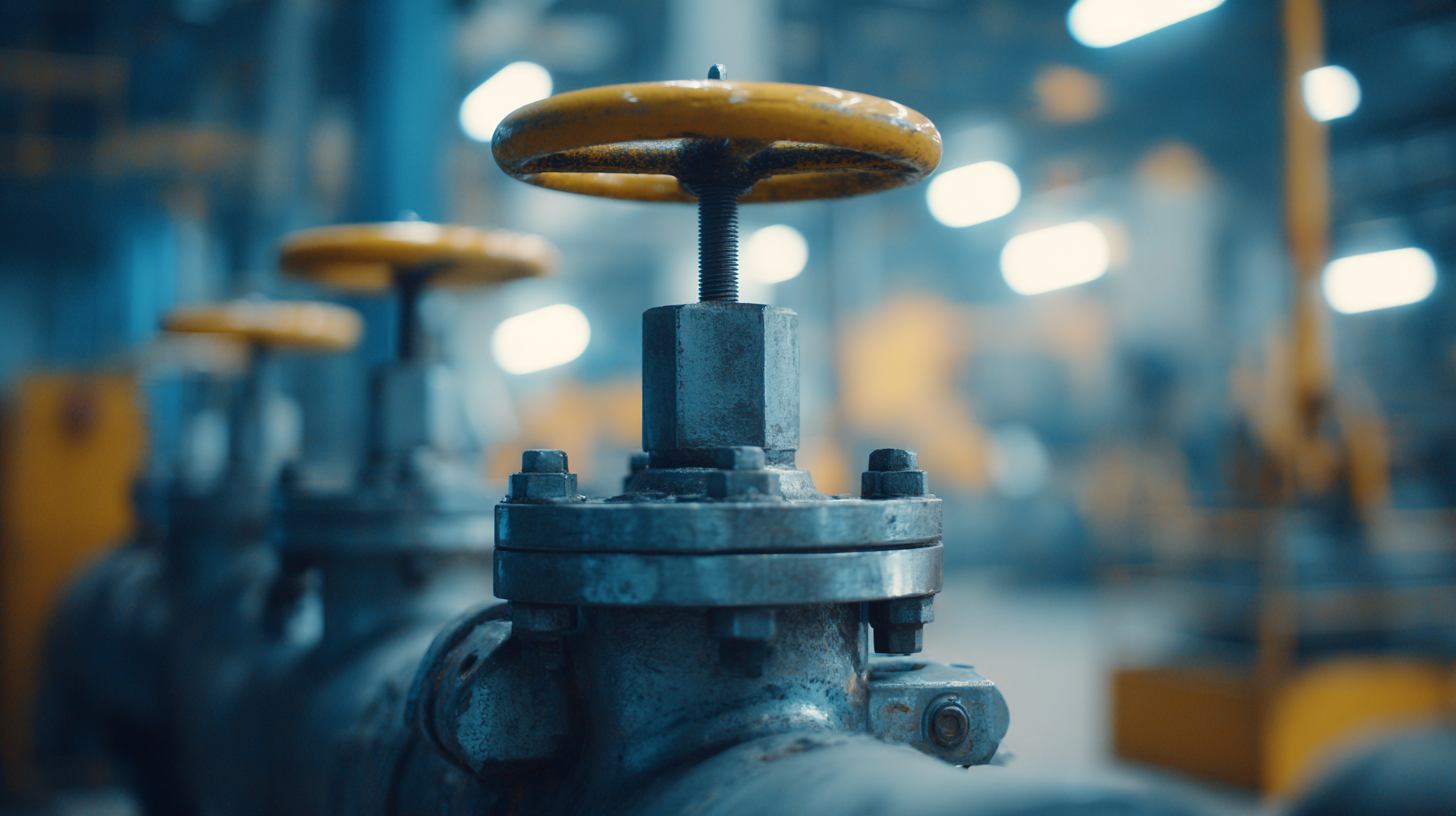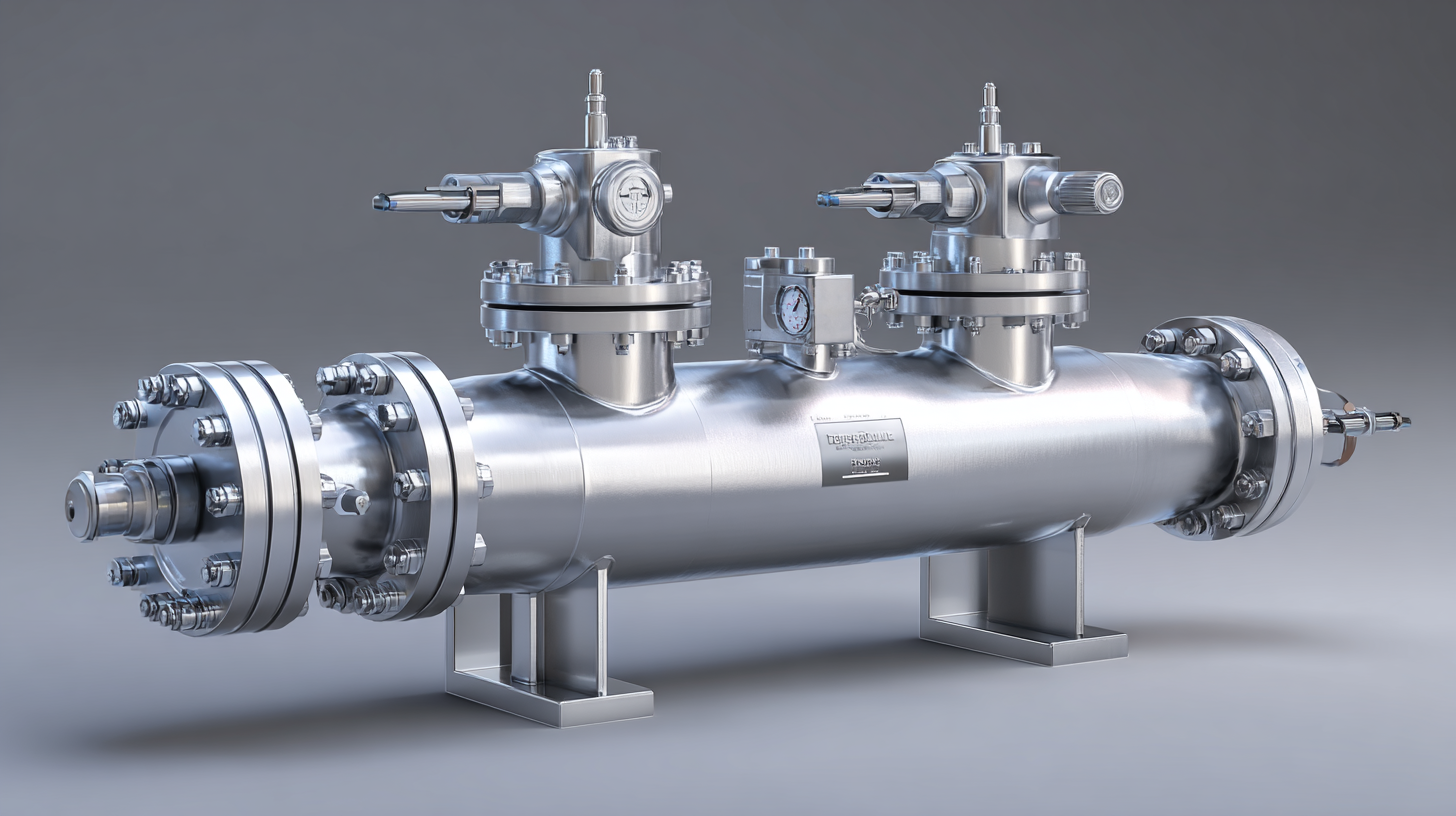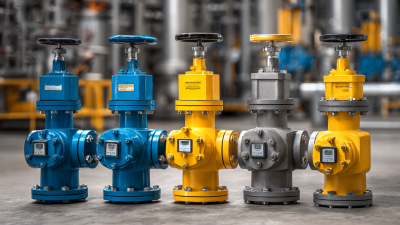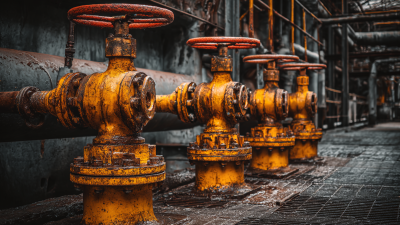
In industrial applications, the significance of pressure safety valves (PSVs) cannot be overstated, as they serve as crucial components in safeguarding equipment and personnel from the dangers of excessive pressure. According to a report by the American Society of Mechanical Engineers (ASME), an estimated 85% of pressure-related incidents involve equipment failures linked to inadequate safety measures, underscoring the need for effective PSVs. These devices not only protect assets but also ensure compliance with stringent regulations set forth by organizations such as the Occupational Safety and Health Administration (OSHA) and the National Fire Protection Association (NFPA). The deployment of correctly designed and maintained pressure safety valves can mitigate risks significantly; thus, understanding their operational principles and maintenance protocols is paramount for industrial safety and sustainability. Emphasizing the importance of these valves is essential in preventing catastrophic failures, which can result in costly downtime and even loss of life.

Pressure safety valves (PSVs) play a critical role in maintaining safety and operational integrity in industrial environments. One of their primary functions is to prevent over-pressurization within various systems, such as boilers, pressure vessels, and pipelines. By automatically releasing excess pressure, PSVs ensure that equipment operates within its designated parameters, thereby averting catastrophic failures that could result from excessive pressure buildup. This functionality is vital in protecting not just the machinery but also the workforce and surrounding infrastructure.
Additionally, pressure safety valves are integral to regulatory compliance in many industries. They help facilities meet stringent safety standards set by governing bodies, which require that effective pressure control measures be in place to minimize risks. Regular testing and maintenance of PSVs are necessary to ensure their reliability when needed most. Moreover, by facilitating smooth operations and reducing downtime due to equipment damage, PSVs contribute to enhanced productivity and efficiency within industrial settings.

Pressure safety valves (PSVs) play a pivotal role in maintaining safety within industrial systems. One critical reason for their importance is that they prevent equipment failure. According to a report by the American Society of Mechanical Engineers (ASME), properly functioning PSVs can avert catastrophic accidents by releasing excess pressure, thus protecting both personnel and machinery. The cost of a pressure-related failure can reach millions, making PSVs not just safety devices but also financial safeguards.
Another significant reason for using PSVs is compliance with regulations. In industries like oil and gas, chemical processing, and power generation, adherence to safety standards is non-negotiable. Recent statistics from the Occupational Safety and Health Administration (OSHA) indicate that nearly 75% of safety violations are associated with inadequate pressure management systems. Utilizing PSVs ensures compliance and mitigates legal risks linked to non-compliance while also enhancing workplace safety.
Tip: Regular maintenance and testing of pressure safety valves are crucial to their reliability. Schedule periodic inspections to confirm they operate correctly under specified conditions, and never overlook the importance of using valves certified by recognized industry standards.
Tip: Invest in employee training to ensure everyone understands the significance of PSVs. Knowledgeable staff can identify potential issues early, leading to a proactive approach to pressure safety management.
Pressure safety valves (PSVs) play a critical role in maintaining the safety and integrity of industrial systems. Despite their importance, several myths persist regarding their functionality and necessity. One common misconception is that larger valves automatically provide better safety; however, this is not always true. According to a recent industry report, improperly sized PSVs can lead to catastrophic failures rather than enhanced safety. It is crucial for engineers to understand the specific requirements of their systems for effective PSV selection.
Another widespread myth is that PSVs only activate during emergencies. In reality, routine testing and maintenance are essential for ensuring their reliability. Research indicates that nearly 20% of PSVs fail to operate as intended due to lack of maintenance and testing. This highlights the importance of regular checks not only to meet safety regulations but to protect valuable equipment and personnel. By debunking these myths, industries can foster a safer work environment and optimize operational reliability, reiterating the vital role PSVs play in industrial applications.
| Myth | Fact | Impact |
|---|---|---|
| Pressure Safety Valves Are Not Necessary | They are critical for preventing pressure buildup and equipment failure. | Increased risk of accidents and costly downtime. |
| All Pressure Safety Valves Are the Same | They vary based on application, pressure, and material. | Using the wrong type can lead to failures. |
| Regular Maintenance Is Optional | Regular inspections and maintenance are essential for safety. | Neglecting maintenance increases risk of malfunction. |
| Pressure Safety Valves Only Work in Extreme Conditions | They are designed for standard operating conditions as well. | Can lead to improper application and safety failures. |
| Setting the Valve Too High Is Safer | Incorrect settings can lead to dangerous situations. | Increases risk of overpressure scenarios. |
| One Valve Can Handle All Systems | Different systems require specific valve configurations. | Can lead to inefficiencies and system failures. |
| Pressure Relief Systems Are Only for Large Industries | All industries benefit from proper pressure safety measures. | Safety issues can arise in any operational scale. |
 Pressure safety valves (PSVs) are critical components in various industrial applications, providing essential protection against overpressure conditions. To ensure their performance and reliability, regular maintenance is paramount. According to a report by the National Board of Boiler and Pressure Vessel Inspectors, almost 50% of pressure relief devices fail during routine operational events due to inadequate maintenance practices. Thus, implementing a robust maintenance strategy is not only a regulatory requirement but also a fundamental aspect of workplace safety.
Pressure safety valves (PSVs) are critical components in various industrial applications, providing essential protection against overpressure conditions. To ensure their performance and reliability, regular maintenance is paramount. According to a report by the National Board of Boiler and Pressure Vessel Inspectors, almost 50% of pressure relief devices fail during routine operational events due to inadequate maintenance practices. Thus, implementing a robust maintenance strategy is not only a regulatory requirement but also a fundamental aspect of workplace safety.
A crucial step in maintaining PSVs is to conduct regular inspections and testing. Industry standards recommend at least an annual inspection, with testing frequency increasing based on the specific application and operating conditions. The American Society of Mechanical Engineers (ASME) emphasizes that any signs of corrosion, wear, or malfunction must prompt immediate action—whether it be repair or replacement. Additionally, it is vital to keep a comprehensive maintenance log that tracks performance and any maintenance activities, as this documentation can provide valuable insights and enhance the overall reliability of the valves.
Furthermore, ensuring that the valves are installed correctly and calibrated to the precise pressure settings is equally important. According to a study by the American Petroleum Institute, incorrect settings can lead to catastrophic failures, costing industries millions in damage and downtime. By adhering to these essential maintenance tips and leveraging best practices, industries can significantly enhance the performance and longevity of pressure safety valves, thereby safeguarding both personnel and equipment.
Pressure safety valves (PSVs) are essential components in various industrial applications, ensuring that equipment operates within safe pressure limits. These devices prevent catastrophic failures by releasing excess pressure from systems, thus safeguarding personnel and infrastructure. Understanding the key regulations that govern PSV usage is crucial for compliance and safety.
One of the primary regulations is the ASME Boiler and Pressure Vessel Code, which establishes design standards and testing requirements for pressure relief devices. Adhering to these standards ensures that PSVs function correctly under pressure, minimizing risks associated with overpressure situations. Another important regulation is the API 520 guideline, which provides a framework for sizing and selecting PSVs tailored to specific processes, emphasizing the importance of proper installation and maintenance.
**Tips:** Regular inspections and maintenance of pressure safety valves are vital to ensure their reliability. Always keep detailed records of inspections and repairs, and train personnel on the proper operation and importance of these safety devices. Engaging in continuous education and staying updated on regulatory changes can also significantly enhance compliance and safety within your facility.
This bar chart illustrates the compliance rates of three key regulations governing pressure safety valve usage in industrial applications. Regulation A has a compliance rate of 85%, Regulation B has 75%, and Regulation C leads with 90%. These figures highlight the importance of adhering to safety regulations in ensuring effective pressure management in industrial environments.





